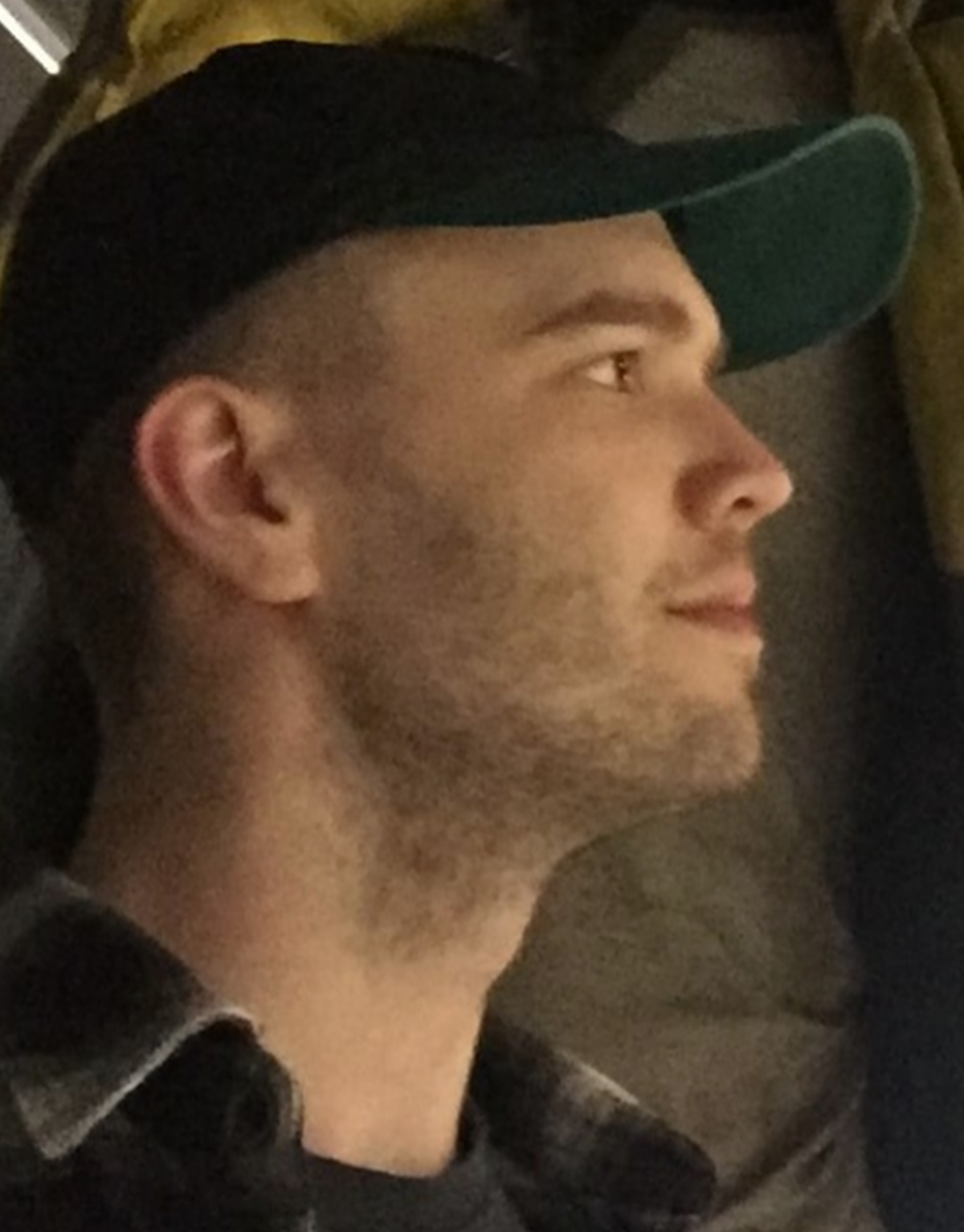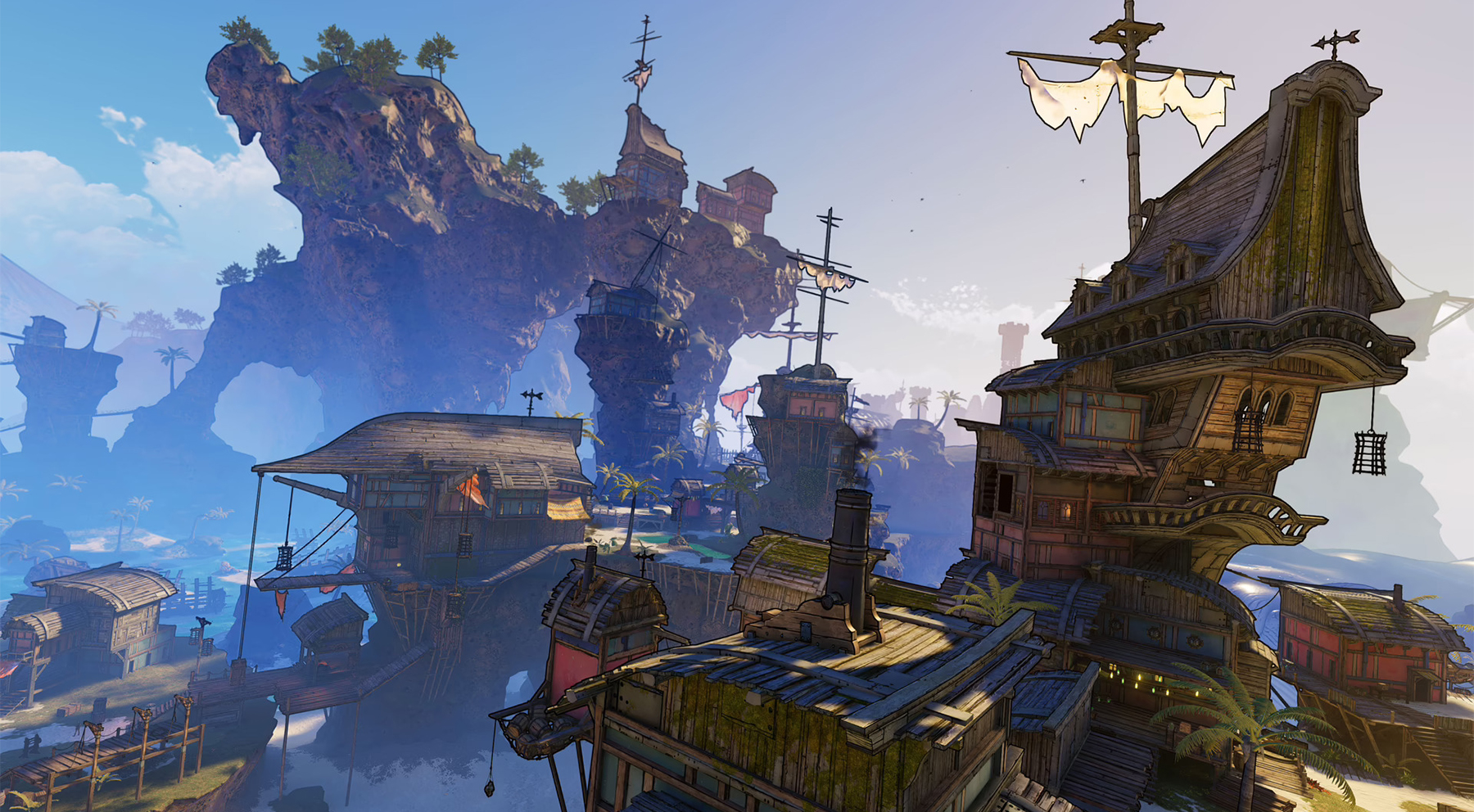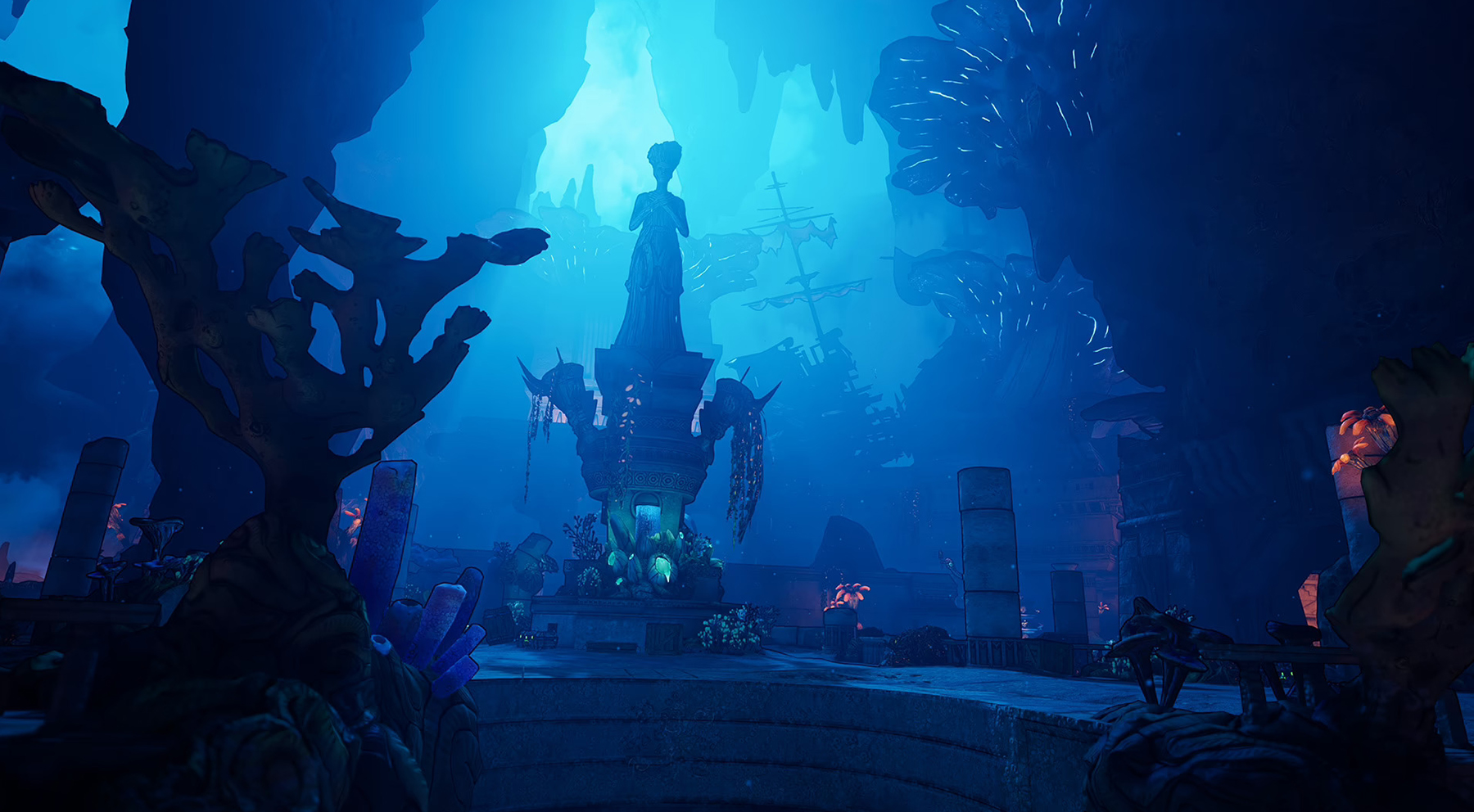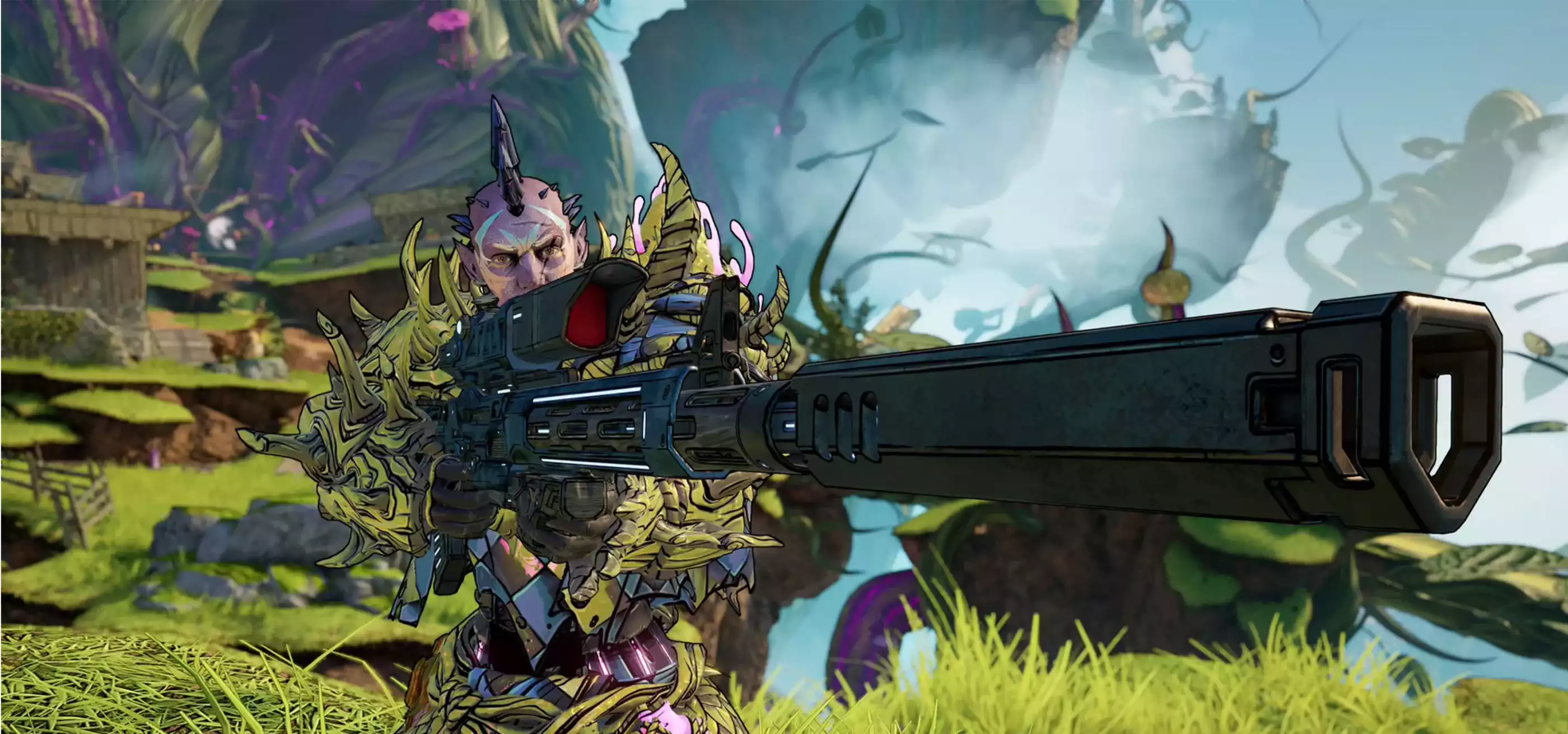One day back in 2009, a young Nathaniel Hinton went to Blockbuster and rented a wacky new post-apocalyptic shooter by the name of Borderlands. “It was the first RPG type of game I had ever played on the Xbox 360,” Hinton says. “Since then, I’ve been a fan of the franchise and Gearbox as a studio.” A decade later in 2019, soon after graduating from DigiPen’s BFA in Digital Art and Animation program, Hinton landed his first game industry job at none other than Gearbox Software, putting his skills as a level artist to use on the latest, zaniest entry in the Borderlands series — Tiny Tina’s Wonderlands.

The new franchise spinoff thrusts players into the fantasy tabletop RPG “Bunkers & Badasses,” whose dungeon master — or Bunker Master in this case — is Tiny Tina herself, the quirky teenage demolitions expert first introduced in Borderlands 2. Although the game features plenty of familiar FPS action, players spend lots of time exploring an isometric D&D style overworld as well. “What’s really nice about Tiny Tina’s Wonderlands is that because Tina is the Bunker Master, anything could exist in the maps we were making because Tina wants it there. So depending on what map we were working on, we could lean more into the high-fantasy style, like in Tangle Drift, or more into the post-apocalyptic style, like in Ossu-Gol Necropolis,” Hinton says.
As a junior level artist, Hinton was responsible for taking rough map layouts from Gearbox level designers and artfully populating them with environmental assets like rocks, walls, and floor art. “There’s lots of communication between me and the level designer about where the art assets should go and what changes we think need to be made,” Hinton says. “I was responsible for Wargtooth Shallows, Drowned Abyss, and The Godswell maps.”

Figuring out how to arrange all those assets wasn’t just an aesthetic exercise — it was a practical gameplay challenge as well. “Something to consider when making an FPS area is the amount of space needed for combat to happen in,” Hinton says. In a series famous for chaotic, over-the-top, co-op combat with hordes of enemies and special abilities thrown in, keeping battles navigable and enjoyable meant lots of careful consideration in asset placement. “Early on, I had to keep widening my areas, because there wouldn’t be enough space for four players and multiple enemies to run around each other,” Hinton says. “Thinking about combat areas as ‘skate parks’ helped keep these areas wide and fun.”
Hinton got to show off lots of that compositional know-how in the game’s expansive Wargtooth Shallows map, a sandy, dried-up seabed full of splintered shipwrecks and sun-baked coral. “There are a couple of side quests and a lengthy main mission there that required many different areas to be made,” Hinton says. “It was an excellent opportunity to come up with many different compositions using the same kit of art assets.”
Post-release, Hinton says Wargtooth Shallows has become one of his proudest contributions to the game — but getting to that release stage wasn’t easy. Joining Gearbox in 2019 meant starting development on Tiny Tina’s Wonderlands just a few short months before the COVID-19 pandemic swept the world. “Suddenly the entire studio had to work only online, and that really shook up how work was organized and communicated,” Hinton says. “I went a little crazy in my studio apartment not being able to physically interact with the people who I’m making this great game with.”

That shakeup found Hinton relying on a big lesson he says he learned during his days at DigiPen. “Communicate, communicate, communicate. If you want something in your map that requires the help of another department, then you need to be the one to communicate that need to that department,” Hinton says. “Especially during the pandemic, I couldn’t be coy about pinging leads and artists who have been at Gearbox for 10 years.”
Now that in-person life has returned to Gearbox, Hinton has been relishing the open work culture he’s found himself in after graduating from DigiPen. “There are a lot of people here who are passionate about the art they make, and they love to talk about it!” Hinton says. “Those of us who are in the studio meet each other outside of working hours for kickball, karaoke, and Drink & Draw.”
The studio got a chance to show off their hard work at the official Tiny Tina’s Wonderlands launch party in downtown Dallas last spring — an event that marked Hinton’s first official game credit as an industry professional. “There were so many people there who were jumping up and down for the release of Tiny Tina’s Wonderlands,” Hinton says. “It felt good hearing the excitement in their voices.”
